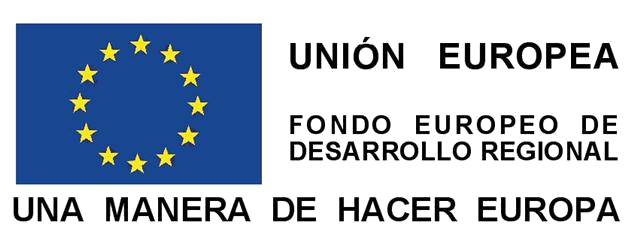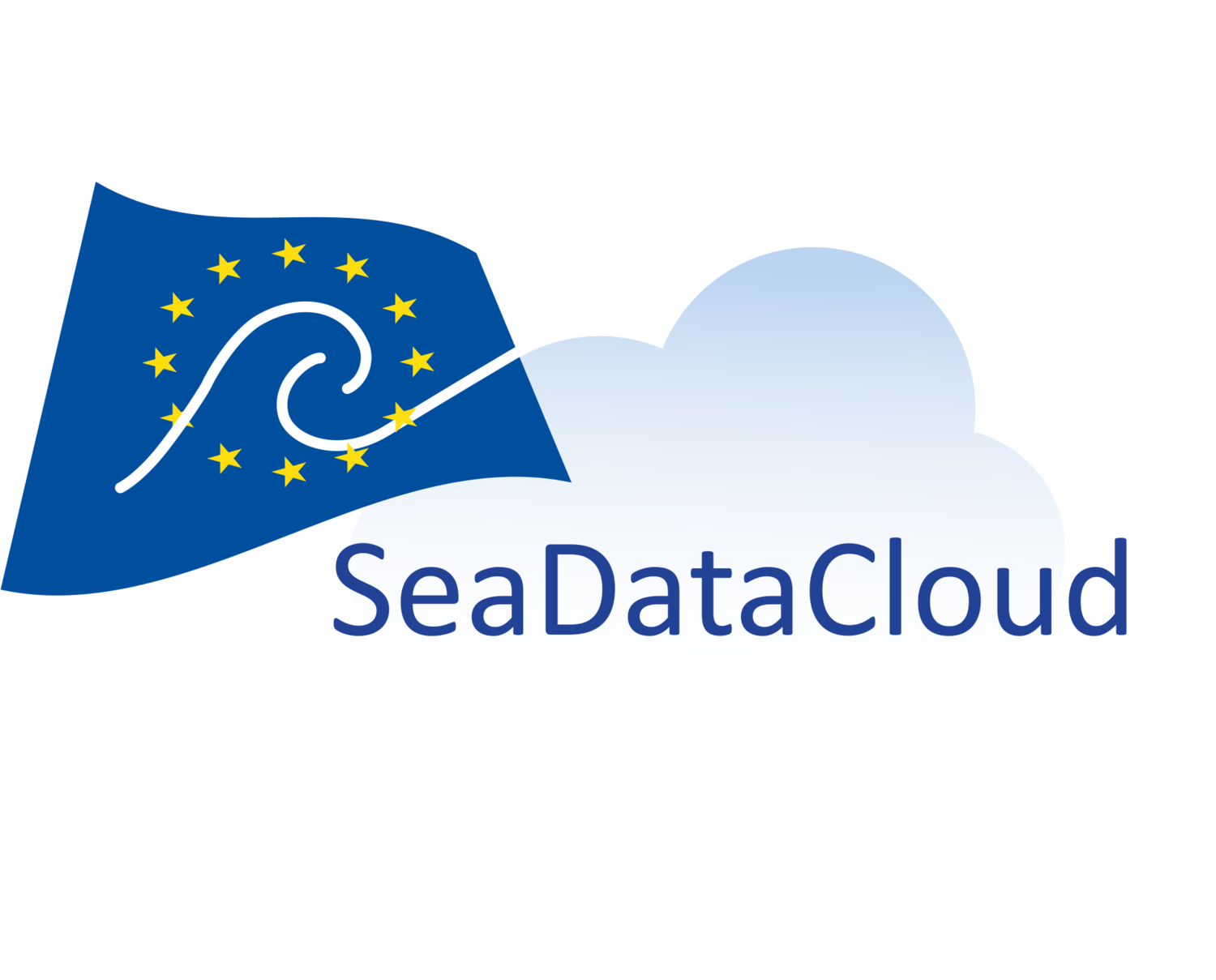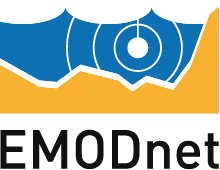Acoustic / geophysical instrumentation
-Hydrographic Kongsberg Maritime AS EA 600 singlebeam echosounder
Can work with a transducer of 12 kHz (great depth, up to 12000 m) and another of 200 kHz (shallow depth, and high resolution).
Are located in a retractable keel
-Atlas Hydrosweep DS-3 1º x 1º multibeam deep-water echosounder
Multibeam echosounder for bathymetric maps
Working frequency of 15.5 kHz (emission frequency between 14.5 and 16.0 kHz) and 11000 m of depth of range (operating range between 10 and 11000 m)
Max. vertical resolution of 6.1 cm
Accuracy (0.5 m or 0.2% of the depth)
Beam opening is 1º x 1º,
Creates 320 beams by hardware and up to 960 with High Order Beamforming and with double swath 1920 soudings,
The spacing of the beams can be equidistant or equiangular.
It is installed in the boat hull
-Atlas FS-20-100 Fansweep Shallow water multibeam echosounder
Interferometric multibeam echo sounder to make background maps
100 kHz emission frequency
Operating range between 5 and 300 m
Accuracy is ± 0.10 m + 0.2% of depth
Beam opening is 1º x 1.3º
The number of beams is up to 1440
The spacing of the beams can be equidistant or equiangular.
It is installed in the boat hull.
-Applied Microsystems SV Plus V2 Speed sound profiler
Self-contained sound velocity sensor that has a built-in pressure sensor and temperature probe; is used to introduce a sound velocity profile to the echosounders (especially multibeam).
Maximum working depth 6000 m
-Parasound P-35 parametric echosounder
It is a parametric profiler of high resolution and narrow beam, the main application of this echosounder is the realization of high resolution seismic profiles of the surface sedimentary layers, as well as the detection of elements buried in the seabed;
Primary frequency 18 to 39 kHz, and secondary frequency between 0.5 and 6.0 kHz
The pulse length is 0.17 to 25 ms
More information
-Kongsberg Maritime AS EK 60 biological Echosounder
It is used for the estimation of biomass and the individual detection of targets, it can also make an automatic follow-up of the fund as the EA 600
It has transducers of 18, 38, 70, 120 and 200 kHz located in a retractable port keel.
-Teledyne RD Instruments ADCP Ocean Surveyor 75 and 150 kHz Doppler Current profiler
It is an instrument that allows to characterize the marine currents from the different components of the speed in the different layers of water
The range for the 75 kHz transducer is 900 m, and that of the 150 kHz transducer is 600 m.
Transducers in the retractable port keel.
-Marport net sensors
MARPORT Sensors of depth, distance, height, temperature and inclination for -towed equipment from ships and for fishing nets.
-Multi-function towfish with side-scan sonar (SSS) and Edgetech DT-1 2400 Series subbottom profiler
A towfish is a scientific instrument towed below the surface of the sea. It is used to transmit and receive sound signals to generate side scan sonar images.
- The vehicle has a DW-75/410 dual-frequency side scan sonar (75 and 410 kHz)
- Broad band subbottom profiler DW-216 (2 to 16 kHz)
- Mesotech 1007 altimeter
- Depth sensor
- And possibility of connection with a Magnetometer Marine Magnetics SeaSPY 3000.
The maximum depth of work is about 3000 m
Weighs 600 kg and uses a 750 kg depressor
Also includes a motion sensor
-Lockheed Martin Sea-Air Systems Sippican MK21 Oceanographic data acquisition system
It is a system used to deploy disposable probes that are used to measure physical-chemical parameters of the ocean as a function of depth such as temperature (probes XBT), speed of sound (probes XSV) and conductivity and salinity (XCTD probes)
-Continuous circuit of surface sound velocity
It is a surface water tank that is renewed by using a pump that circulates water through a circuit, inside the tank there is a sensor installed, which calculates the differences in the speed of transmission of the sound while the vessel changes position
-Micro-g LaCoste Air-Sea System II Gravimeter
Is a system of data acquisition of gravity of the area where the ship sails.
Resolution 0.01 mGal
Accuracy at sea <1.0 mGal
Drift <3.0 mGals per month
Range 12000 mGals (Universal).
Located in the Local Gravimetry
-Schintrex CG-5 portable gravimeter
It is used to calibrate the onboard gravimeter.
Resolution 1 microGal
Standard deviation <5 microGales
Operating range 8000 m Wales without restarting
Residual drift <0.02 mGal / day
Weight 8 kg
GPS input.
-Magnetics SeaSPY 300 Magnetometer
Magnetic data acquisition system that has an omnidirectional Overhauser effect sensor of great precision and very stable over time.
Resolution 0.001 nT
Accuracy 0.2 nT
Working range from 18000 nT to 120000 nT
Sampling period from 0.1 Hz to 4 Hz
Maximum working depth 300 m.
HIPAP 452 Hight precision Acustic positioning System
Instrumentation for the characterization and sampling of the water column and the atmosphere
-2 x CTD SeaBird SBE911 plus
CTD SBE 9 Plus+ SBE 11 plus V2 Cover Unit + Carousel Water sampler for 24 bottles.
Oceanographic instrument used to measure the conductivity, temperature and depht parameters in the water column, other sensors can also be added to measure other parameters such as turbidity, oxygen, chlorophyll among others. In addition, a system called a carousel where a series of Niskin bottles are installed can be installed. Sampling bottles close to predefined depths, are activated manually or through a computer, and water samples can be analyzed later to determine the biological parameters and chemicals.
The CTD SBE 9 Plus has the following sensors.
- SBE3plus temperature sensor
- SBE4C conductivity sensor
- Digiquartz pressure sensor
- 5T pump
Auxiliary sensors
- WetLabs AFL-NTU-RTD Flurometer and turbidimeter
- SeaPoint SCF fluorometer,
- SeaPoint STM Turbidimeter
- SeaBird SBE43 Oxygen sensor
- WetLabs C-Star transmitter
- Biospherical QSP-2300/QCP-2300 HP PAR (Photosynthetically Active Radiation) sensor
- Benthos PSA-916 altimeter
-CTD Sea-Bird SBE 25
Oceanographic instrument used to measure the conductivity, temperature and depht parameters in the water column, other sensors can also be added to measure other parameters such as turbidity, oxygen, chlorophyll among others.
The CTD SBE 25 has the following sensors
- SBE3F temperature sensor,
- SBE4C conductivity sensor
- SBE Digiquartz pressure sensor
Auxiliary sensors
- SeaPoint SCF Fluorometer,
- SeaPoint STM Turbidimeter
- SeaBird SBE43 oxygen sensor
-MOCNESS net
The MOCNESS system (Multiple Opening-Closing Nets / Environmental Sampling System) is a towled multinet device capable of working up to 6000 m that is based on a 2-D framework and 10 nets that are closed in a controlled manner to collect samples in containers at different depths, it is mainly used in studies of plankton.
The multinet includes different sensors
- Pressure sensor
- SBE3 Plus temperature sensor,
- SBE3 Plus conductivity sensor
- SBE43 oxygen sensor
- WetLabs fluorometer
- C-Star transmitter.
-Chelsea Technologies Group SeaSoar
Undulating towed oceanographic instrument for the characterization of the water column with undulate regimes of 0 to 500 m depth.
The structure incorporates a CTD SeaBird Sea-Bird 9 plus profiler + Cover unit Sea-Bird 11 plus V2 equipped with various sensors
- 2 x SBE4C conductivity sensors
- 2 x SBE3plus temperature sensors
- Digiquartz pressure sensor
Auxiliary sensors
- SeaPoint fluorometer
- SeaBird oxygen sensor
-2 x WorkHorse Monitor 300 Khz LADCP (Low Acoustic Doppler Current Profiler).
Teledyne RD Instruments LADCP 300 kHz Doppler current profiler. It is an instrument that allows to characterize the marine currents from the different components of the speed in the layers of water, consists of two heads Workhorse ADCP (master and slave) located on the same vertical and oriented in the opposite direction
-3016 Geónica Meteodata Meteorological station
Meteorological station that includes sensors of atmospheric pressure, temperature, relative humidity, global radiation, speed, wind direction
and ultraviolet radiation (UV) tha data is integrated with the fluorometer and thermosalinograph throught SADO system
- PRR-800 Multispectral Radiometer (Biospherical)
Instrument used to measure the intensity of radiant solar energy in the column of water.
Technical characteristics
Irradiance and radiance sensors: 15 channels (305, 313, 320, 340, 380, 395, 412,
443, 465, 490, 510, 555, 670, 694, 710 nm)
Additional elements:
- Temperature sensor (-5 to 35ºC)
- Ultraviolet photodetector (305,313 and 320 nm)
- PAR sensor
- Inclinometer (pitch & roll)
- Unit of cover
- Telemetry cable (200 m) with kevlar reinforcement
- Pressure sensor up to 300m
Instrumentation for bottom sampling and fishing material
-OSU (Oregon State University) Piston sediment core
Instrument used to collect sediment columns. Piston corer of 10 m that needs a special structure (or cradle) that is fixed on the cover of the hinged gantry of starboard, deploys to starboard with a trigger cylinder (Trigger corer 1.5 / 3 m) that activates the piston .
-Rock dredge
-Gravity core
Instrument used to collect sediment columns. The instrument is dropped vertically in the water and it falls by gravity to penetrate the ground for later recovery.
-KC Denmark Multisampler Multicorer 6 x ø100 x 600 mm
Multicorer with 6 tubes of 110/105 mm in diameter and 600 mm in length, sampleable distance of 500 mm, deployed up to 6000 m. This instrument consists of a multitube tripod sampler of the surface sediment (up to 40 cm) and the water-sediment interface with a high degree of preservation. After depositing the system on the bottom, the equipment comes into operation by introducing up to 6 methacrylate tubes into the sediment thanks to a hydraulic piston device. These tubes are hermetically sealed by their base and roof.
-IKMT net (2 sizes) of 3 and 9 m²
Isaacs-Kit Midwater Trawler net for the collection of large quantities of macrozoplankton and micronekton
-Pelagic fishing gear (+ Apollo pelagic doors)
Pelagic fishing net of 20 to 30 m vertical opening and 55 to 65 m horizontal opening, doors of 4.0 m²
-Pelagic fishing gear (+ Apollo pelagic doors)
Pelagic fishing net of 6 to 14 m vertical opening and 18 to 25 m horizontal opening, doors of 3.0 m²
- Scanmar Multisampler cod end closing system
System used to close cod end, ability to close 3 cod ends acoustically
- Bottom fishing gear (baca), trawl doors, blocks and fishing accessories
-3 Ictiometers
Instrument that allows to quantify the length of the fish.
Laboratory Equipment
Equipment for continuous analysis:
-Marine water collected in continuous.
Continuous marine water collection system. The water is collected by a pump BKMKC.1011 (TECNUIM) with the Teflon core located about 4.5 meters deep. All laboratories are supplied by this system.The pump has a flow rate of 4m3/h
-10 AU Fluorometer (Turner Designs)
Instrument to quantify the amount of chlorophyll in the envioronment in real time. Continuous measurement
Technical characteristics
Detector: Photomultiplier; Red (185-870 nm)
Detection limits:
- Chlorophyll a: 0.025 μg
- L Rhodamine WT Dye: 0 - 250 ppb
- FluoresceinDye: 0 - 250 ppb
Measurement range:
- Chlorophyll a: 0 - 250 μg
- L Rhodamine WT Dye: 0 - 250 ppb
- FluoresceinDye: 0 - 250 ppb
Filters: Chlorophyll, Rhodamine and without filter.
Cuvette holder: Continuous flow
Light source: UV halogen lamp (chlorophyll)
-SBE21 thermosalinograph
- Licor7000 pCO 2 Continuous measurement equipment (Li-COR)
Equipment connected to the boat's continuous circuit to measure pCO 2 in water
Technical characteristics:
It has a wet box where the water circulates and a dry box where it is located
the LICOR analyzer and the data acquisition computer
It has direct connections for the different gas patterns needed for the calibration of the
equipment that is done automatically
Equipment for the analysis of samples:
-Guildline 8410-A Portasal Salilometer
Portable salinometer used to determine the salinity of samples accurately.
Technical characteristics
Sample volume: Minimum of 150 ml
Thermostatic bath: Range: 15 - 38 ºC
Stability: ± 0.001 ºC (difference with the ambient temperature of 2 ºC)
Accuracy: ± 0.003 psu (for 24 hours without re-standardization)
Resolution: ± 0.0003 psu (at 35 psu and 15 ºC)
Measuring range: 0.004 - 76 mS / cm 2 - 42 psu
- LS 55 Spectrofluorimeter (PerkinElmer)
Instrument used to measure the fluorescence spectra of a sample, thus identifying the presence and concentrations of certain
molecules present in the analyzed sample.
Technical characteristics:
Radiation source: 20kW xenon lamp
Pulse duration: 8μs.
Sensitivity: 500: 1
Accuracy: ± 1.nm
Sweeping speed: 10-1500nm / min with increments of 1nm
Emission bandwidth: 2.5 - 15nm variable every 0.1nm
Excitation bandwidth: 2.5 - 20nm variable every 0.1nm
Software and PC: available without network access.
Reading range: 200-900nm
-Spectrophotometer Lambda 850 (PerkinElmer)
Instrument of analysis that allows us to determine the concentration of a certain substance in aqueous samples from the light
absorbed or transmitted by the sample after having been traversed by a beam of light.
Technical characteristics:
UV / Vis Resolution: ≤ 0.0 5nm
Range of wavelength: 175nm - 900nm
Bandwidth: 0.05 to 5 nm with variations of 0.01nm
Radiation sources: Tungsten - halogen lamp / Deuterium lamp
Reading: Absorbance, transmittance (%), reflectance (%) and energy
Accuracy (wavelength): ≤ 0.02 nm
Accuracy (wavelength): ± 0.08 nm
Stability: ≤ 0.0002 Abs / h
Amplitude of the baseline: ± 0.0008 Abs
Detector: R 6872 photomultiplier
-FACSCalibur Flow Citometer (Beckton Dickinson)
Analysis instrument used for the classification and counting of the cells of a sample in solution measuring the light scattering
and fluorescence of the same
Technical characteristics
Fluorescence sensitivity: 1,000 fluorescein molecules per particle
Types of working tubes: 12 mm x 75 mm
Filters: 3 photomultipliers (band pass of 530 nm, 585 nm and 650 nm) Allow to work with
Fluorescein, Phycoerythrin, Propidium Iodide and Acridine Orange among other fluorochromes.
Parameters: FL1, FL2, FL3 and FL4
Direct dispersion detector: 300 nm spectral response at 1100 nm
Laser:
- Laser Ion-Argon (emission fixed at 488 nm)
- Red diode laser (emission fixed at 635 nm)
- Fluorescence resolution: <3% of the full peak
Analysis: 8 cellular parameters
Software and hardware: Available (Macintosh)
Sample flow rates: high (60 ml / min), medium (35 ml / min) and low (12
ml / min). The flow rates are modifiable.
- Tricarb 3100TR liquid scintillation counter (PerkinElmer)
Instrument analysis used to detect amounts of alpha, beta and gamma radioactivity.
Technical characteristics:
Low-background liquid scintillation spectrometer, automatic and controlled by internal computer, specially configured to
detect low concentrations of activity.
Low energy source of 133Ba (less than 20 μCi).
With capacity to work with 408 samples in 20 ml vials or 720 samples in vials of 4 or 7 ml.
Bidirectional mechanism to transport the sample racks to the reading area, with automatic loading and permanent identification
of each of them.
High sensitivity to detect low concentrations of alpha and beta radiation
Energy range for the 14C measurement between 0-156 KeV with an acceptable minimum of
63% efficiency. In the high sensitivity mode power range of 1-12.5KeV.
Energy range for the 3H measurement between 0-18.2 KeV with an acceptable minimum of
95% efficiency. In high sensitivity mode power range of 14.5-97.5KeV
-Titrator 808 automatic titrator (Metrohm)
Instrument used to analyze the concentration of a certain substance in a dilution.
Technical characteristics:
Polarization current: -122.5 to 122.5 μA
Resolution:
- pH: 0.001
- Voltage: 0.1 mV
- Temperature: (-150 to + 250ºC): 0.1ºC
- Current: 0.01 μA
Precision:
- pH: ± 0.003
- Voltage: ± 0.2 mV
- Temperature (-20 to + 150 ºC): ± 0.2 ºC
Work modes:
- Preselected endpoint
- End point of the reaction
- Karl Fisher
- Measurement of pH / voltage / temperature / concentration
- Archivable personal programming
Measuring ranges:
- pH: from 0.00 to 14.00
- Voltage: from -2000 to 2000 mV
- Temperature: from -150 to 250 ºC
- Current: from -200 to 200 mA
- San ++ nutrient analyzer (Skalar)
Nutrient analysis equipment with continuous and automatic operation. The samples and the reagents are left ready, and then the
equipment is responsible for taking the sample, which will through a series of channels where it will undergo certain processes,
and at the end of said channels, will be analyzed by a photodetector, which will record the result in a computer
Technical characteristics:
5 simultaneous sampling channels available
Chemical unit with pump, drainage valves and chemical modules
Detectors
Data processor
Self-sampling unit
-Orion Star portable Ph-meter(Thermo)
Portable equipment for pH measurement of liquid samples
Technical characteristics:
Selectable resolution: 0.001, 0.01 or 0.1
PH measurement electrode included
Calibrated with Orion buffers
- 550 Portable Oximeter (YSI)
Portable equipment for the measurement of dissolved oxygen in water samples.
Technical characteristics:
Dissolved oxygen measurement range from 0 to 20mg / L (± 0.3mg / L)
Resolution 0.01mg / L
Temperature measurement range -5 to 45 ° C (± 0.3 ° C)
Temperature resolution of 0.1 ° C
Temperature units in degrees Celsius or Fahrenheit
Oxygen sensor prepared for freshwater, marine or contaminated water
-Orion 3 Star Portable conductivity meter (Thermo)
Portable equipment for the direct measurement of the conductivity of liquid samples
Technical characteristics:
Selection of conductivity temperature compensation
Consignment of the linear compensation coefficient of the conductivity temperature: 0.1-10
Consignment of the conductivity factor TDS: 0.00-10.00
Selection of the conductivity reference temperature: 15, 20 or 25 ° C
Equipment for the treatment of samples:
-2 x 34HC liquid nitrogenContainer (Taylor-Wharton)
Container to keep nitrogen in the liquid state for as long as possible.
Technical characteristics:
Volume of liquid N2: 34 liters
Filling frequency: approximately 1 month (depending on use and environmental conditions)
Baskets (samples): Taylor-Wharton
-6 x ReaxTop tube agitator (Heidolph)
Tube agitator instrument for the correct homogenization of the sample.
Technical characteristics
Mode of use: By pressure or fixed (1 tube)
Type of movement: Circular and vibratory
Vibration: 0-2400 vibrations / min
-E 75 DRY Autester autoclave (JP Selecta)
Instrument used to sterilize both solids and liquids.
Technical characteristics
Operation: 9 automatic programs (liquid, solid, solid + drying) (end of cycle acoustic signal) and 1 free program.
Working pressure: 1 - 2 bar
Timer: 1 - 99 minutes
Temperature range: 105 - 134 ºC
Capacity: 75liters
- Certomat BST Incubator (Sartorius)
Laboratory apparatus used to grow bacteriological or cellular cultures. It allows to maintain the temperature and humidity in
the conditions that interest us.
Technical characteristics:
Dimensions (WxHxD): 1150x760x750 mm
Lighting: Around 90W (5 lamps of 18W each)
Agitation: 40-400 U / min
Working temperature: 5ºC to 70ºC
-5 x Neslab RTE 17 Thermostatic bath(Thermo)
Bath used to regulate the temperature of the samples. We can connect a second container (to keep it also at controlled
temperature) since it has a pump of recirculation.
Technical characteristics:
Tank capacity: 17 liters
Range T: -24ºC to 150ºC with variations of 0.1 ºC
Stability: ± 0.01ºC
Tank size (WxLXD): 24.2x20.6x22.9 cm
-Thermo DC10 thermostatic bath (Haake)
Bath used to regulate the temperature of the samples.
Technical characteristics:
Tank volume: 8L
Temperature: up to 70ºC
Working fluid: water
Measuring sensor: Quartz sensor ± 0.1ºC
-2 x 550 Ultrasonic Bath (Bransonic)
Bath for cleaning of material by ultrasound. It can also be used to undo cell clumps or other substances
Technical characteristics:
Tank capacity: 9.51L
Tank size (WxDxH): 11.5 "x 9.5" x 6 "
Ta accuracy: ± 4ºC
Working frequency: 40kHz
-2 x P15 marine balance (Pols)
Instrument to measure the mass of the samples.
Technical characteristics:
Response time: 0.3s
Quick programmable weight classification for up to 10 individual series of 8 weight categories
RS-232 connector for PC or printer
Range: Maximum 20kg ± 10g Minimum 40g
-2 x A-3S Suction pump (Eyela)
Suction pump generally used for leaks
Technical characteristics:
Maximum suction speed: 16-19L / min
Tank material: Polypropylene
Tank volume: 10L
Outlets of the tank: 2 exit points of 9mm diameter
-WP6122050 Vacuum pump (Millipore)
Vacuum pump with head resistant to the use of corrosive chemicals
Technical characteristics:
Empty: 813 mbar
Maximum pressure: 2.41bar (35psi) intermittent, 1.37bar (20psi) continuous.
Maximum flow: 37 l / min
Connections: 1/4 "tube
-2 x WP6222050 Vacuum pump (Millipore)
Vacuum pump with head resistant to the use of corrosive chemicals
Technical characteristics:
Minimum vacuum: 98 mbar
Maximum pressure: 7 bar (102psi continuous, 80 psi intermittent)
Connections: 1/4 "tube
-2 x Ecoline Masterflex peristaltic pump (Ismaltec)
Pump for the circulation of liquids through a circuit of tubes with a adjustable speed
Technical characteristics:
Flow rate 1.7-5 400 mL / min
1 channel
2 convex rollers take care of the medium and the hoses
Interchangeable rotor for example, for low pulsation, higher flow or pressure coefficients
differential increased
For standard 1.6 mm wall thickness hoses
Differential pressure of 1.5 bar
-3 x AV100 Laminar flow cabin (Telstar)
Cabin used to protect biological samples and used products from possible external contamination. They are found in laboratory
containers (One in each container)
Technical characteristics:
Internal dimensions: 1230 x 580 x 700 mm
Extraction rate: 1028 m3 / h
Digital control panel: Hours of operation of the fan, UV, alarms, state of illumination (normal or UV) and programming of UV
irradiation time
HEPA filter H14
Electrical socket in work area
Standard or standby air flow
- Coil BIO-II- A Laminar flow/ P (Telstar)
Cabin used to protect biological samples and used products from possible external contamination.
Technical characteristics:
Dimensions (WxHxD): 420x420x500 mm
Extraction rate: 340m 3 / h
HEPA filters: 381x381x66 mm
Prefilters: 355x355 mm
-2 x Flowtronic extractor hood (Burdinola)
Hood to handle toxic products and protect the worker from polluting gases
Technical characteristics:
Adjustable gas extraction
Interior light
Guillotine with sliding windows
Dimensions 80x180x75
-Studigit 80L bacteriological stove (JP Selecta)
Stove for the incubation of bacteriological cultures.
Technical characteristics:
Capacity: 80L
Maximum temperature: 80ºC
Homogeneity: ± 2%
Stability: ± 0.25ºC
Setpoint error: ± 2%
Resolution: 0.1ºC
Interior dimensions (WxHxD): 50x40x40 cm
-Digitronic 80L Drying stove (JP Selecta)
Stove to dry material and wetted desiccants.
Technical characteristics:
Capacity: 76L
Maximum temperature: 250ºC
Homogeneity: 1.25ºC up to 50ºC, 2.5ºC up to 100ºC, 6.25ºC up to 250ºC
Stability: 0.5ºC
Setpoint error: 1ºC up to 50ºC, 2ºC up to 100ºC, 5ºC up to 250ºC
-2 x LVT9 / 11 / P320 Muffle (Nabertherm)
Laboratory heat oven. It allows to disintegrate the organic matter.
Technical characteristics:
Laboratory incineration oven with lift door
Nominal temperature 1100 ° C
Measures 480-550- 570 mm
Temperature and time program selection
-Allegra X22-R Refrigerated centrifuge (Beckman Coulter)
Centrifuge for 50ml Falcon tubes and for 10 / 15ml tubes (17mm diameter
round bottom)
Technical characteristics:
Speed: from 0 to 15500 rpm (in 100rpm increments)
Time: up to 9h 59min or continuous mode (time ∞)
Temperature: from 20ºC to 40ºC (increase of 1ºC)
Operating range: from 2ºC to 40ºC
Ambient temperature range: from 10ºC to 35ºC
Acceleration: 10 different acceleration profiles
Deceleration: 10 different deceleration profiles
Capacity: 12 50 ml falcon tubes or 48 tubes of 10 / 15ml (17mm diameter of round base)
-Microfugue 22R Microcentrifuge (Beckman Coulter)
Centrifuge adapted for 2ml tubes (Eppendorf) and with adapters for 250μl tubes
Technical characteristics:
Speed: 500 to 14000 rpm
Time: from 30min to continuous mode
Temperature: from -10ºC to 40ºC (increments of 2ºC)
Operation temperature: from 4ºC to room temperature
Ambient temperature range: 4ºC to 35ºC
Temperature for optimal operation: 4ºC to 250C
-Microfugue 18 Microcentrifuge (Beckman Coulter)
Centrifuge adapted for 2ml tubes (Eppendorf)
Technical characteristics:
The free maintenance rotor rotates up to 14,000 rpm (18,000 x g)
Ideal for rapid granulation of DNA, RNA and proteins, and cellular virus isolation
Comes complete with a 24-position autoclavable fixed angle rotor with pressure cap
Silent operation <58 dBa
Soft start / stop
The easy-to-read interface shows both speed (rpm) and force (rcf)
Runtime options: time, wait or pulse
-Comptrol 1002 superclimate equipment (Stulz)
Air conditioning equipment to generate temperature and humidity conditions determined in a laboratory
Technical characteristics:
Range of temperature values: 10-30 ° C
Range of humidity values: 10-90%
Adjustable ventilation
Equipment for the preservation of samples
-2 x MDF-593 Ultrafreezers (Sanyo)
Instrument to preserve samples at low temperature.
Technical characteristics
Internal size (WxDxH): 1280x500x762 mm
Effective capacity: 487L
Temperature control: -20 to -85ºC
Temperature sensor: Pt 100
Optical microscopy and optical equipment.
-TE2000 inverted microscope with epifluorescence and camera accessory (Nikon)
Equipment for visualization of microscopic samples with the light source located below the sample. Thanks to epifluorescence,
it allows us to study samples treated with stains. It has an adapter to attach the digital camera DI-Fi1 (Nikon)
Technical characteristics:
Dimensions (WxDxH): 562x727x703 mm
Objectives: 4x / 0.10 - 10x / 0.25 - 20x / 0.45 - 40x / 0.60
Eyepieces: CFI 10x / 22
Focus:
- Stroke: 10mm
- Macrometer: 4.9mm / rev
- Micrometer: 0.1mm / rev
- Accuracy: 0.05μm
Type of lighting: Halogen lamp 12V 100W and mercury lamp.
Available filters: UV-2A (Ex 330-380), B-2A (Ex 450-490), G-2A (Ex 510-560)
-Eclipse 80i epifluorescence microscope with camera accessory (Nikon)
Equipment for the visualization of microscopic samples. Thanks to the epifluorescence we allows to study samples treated with
stains. It has an adapter to attach the digital camera DI-Fi1 (Nikon)
Technical characteristics:
Objectives: 10x / 0.30 - 20x / 0.50 - 40x / 0.75 - 100x / 1.30oil
Eyepieces: CFIUW 10x / 25
Lighting: Top lighting to the sample, built-in power supply, lamp
halogen 12v 100W and mercury lamp.
Focus: manual with micrometer and micrometer. Stroke of 27mm with mechanism refocus Manual movement of the
macrometer at 14mm / rev, and the micrometer at 0.1mm / rev
Available filters: UV-2A (Ex 330-380), B-2A (Ex 450-490), G-2A (Ex 510-560)
-SM-F1 microscopy camera (Nikon)
Digital camera to attach the TE2000 inverted microscope (Nikon), to the Eclipse microscope80i (Nikon) and the SMZ 1500
(Nikon) stereoscopic magnifying glass to make image captures of samples
Technical characteristics:
2/3 inches
Photographs in color
Megapixel: 5.24
-SMZ 1500 stereoscopic lens (Nikon)
Magnifying glass for viewing small samples.
Technical characteristics:
Lighting: From the base of the sample with adjustable intensity and top lighting throught a flexo
Increases: 0.75 - 11.25
Eyepieces: 10x
It has an adapter to attach the digital camera DI-Fi1 (Nikon).
-SMZ 645 Stereoscopic magnifying glass (Nikon)
Magnifying glass for viewing small samples
Technical characteristics:
Interchangeable plate light / dark field
Increases: 0.8 - 5
Eyepieces:10x
Lighting: Side flexos
-MZ 645 C-DS Magnifying glass S (Nikon)
Magnifying glass for displaying small samples
Technical characteristics:
Increases: 0.5 - 5
Eyepieces:10x
Illumination at the base of the sample with adjustable intensity
Water purification equipment
-2 x Elix 10 Water Distiller Reference (Millipore)
Distilled water generator. All laboratories have a distilled water outlet in the sinks
Technical characteristics:
Production capacity: 10 Liters / hour
Resistivity of the water produced:> 15 MΩ / cm
COT <30ppb
Flow rate of distribution 0.3 - 2 L
-2 x Milli-Q Advantage A10 Distiller (Millipore)
Milli-Q ultrapure water generator.
Technical characteristics:
Resistivity of the water produced:> 18 MΩ.cm
Conductivity of the water produced: 1-0.055 μS / cm
TOC: 1-999 ppb
Delivery flow: 0.5-3 L / min
Final filter 0.22μm
On-board services
-3 Romero Flowtronic gas extraction booths
They are used to work in safety conditions with materials that emit toxic or dangerous vapors
-Telstar Biocyt BIO II A / P laminar flow safety cabinet
Biological safety cabinet (biohazard) Cytostar Class II, for microbiology and cytostatic works
-Diverse GPS position accessories
- System of distribution of compressed gases
The containers of gases are located in a space of the main deck to be stowed, from here the gases are distributed to the different laboratories
-System of distribution of seawater and freshwater
The scientific staff has seawater that is collected continuously by a pump in the keel of the vessel at about 4.5 m depth, the water is distributed to laboratories
-System of distribution of distilled water
There are distilled water outlets in laboratories that can be used for analysis or processing of samples
-Servers
NTP (Network Time Protocol), email, SADO (Oceanographic Data Acquisition System), DNS (Domain Name System), DHCP (Dynamic Host Configuration Protocol), SCF (Fleet System Control), NAS (Network-Attached Storage), backups control cameras, visualization cameras, Intanet and Termosal
-Acquisition computers
Distributed throughout the ship. Depending on the acquisition software, they run different operating systems (Windows, Linux, MACOS, Unix, etc.)
-User computers
Located in the cabins and in the Processing and Information Room (with Internet access) with different operating systems (Windows and Linux)
-Ship Local Area Network(LAN)
Wired network and wireless network that communicates all the rooms of the ship, formed by ethernet cable and other elements (routers, switches and access points)
-Vsat connection
Provide Internet with planetary coverage with 256 kb/s(CIR),512 kb/s(MIR) of bandwidth. It consists of the following elements: C band antenna, ACU and modem.
-Uninterruptible power systems
To protect the equipment more sensitive to current changes, on-line UPSs are used
-Systems of printing and digitalization of documents
The ship has several plotters, printers, scanners and multifunction devices









